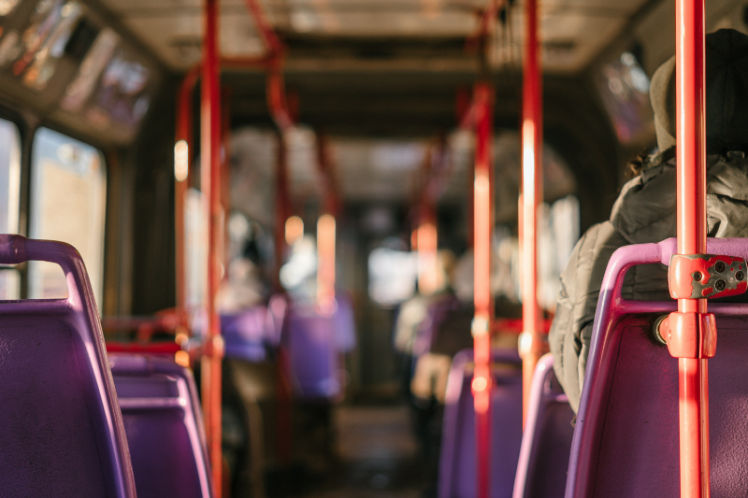The Future for Bus and Coach Operations

The COVID-19 global pandemic in 2020 has shaken the public transport industry, including bus, coach, tram, train, ferry and air.
However, the bus, tram and train sectors in particular, although drastically reduced, have demonstrated their resilience and adaptability to an emergency situation.
Lessons, challenges and messages
Travel as a whole may have reduced, but active travel (cycling and walking) has increased. Both have meant less road traffic and are good for the environment and our health.
On the other hand, public transport supply and demand has dropped severely. But the much-reduced services have been introduced quickly, efficiently, flexibly and collaboratively, and enabled social distancing, allowing key essential workers to get to and from work.
Buses, in particular, worked flexibly to adapt to guidance and requirements and adjusted their operations to match changing demands. Although social distancing reduced bus carrying capacity, technology was quickly harnessed to mitigate potential problems, allowing intending passengers, through phone apps, to plan their journeys by highlighting where and when buses have capacity.
There have been several other lessons, such as a vast improvement in air quality in towns and cities. Transport is the largest contributor to UK greenhouse gas emissions, but recent carbon dioxide emissions have fallen.
The Climate Change Act 2008 provides a statutory target to cut greenhouse gas emissions to net-zero by 2050. The Government’s consultation document ‘Decarbonising Transport – Setting the Challenge’ in March 2020, the same month as the pandemic’s ‘lockdown’, notes that “Climate change is the most pressing environmental challenge of our time” and envisages a major role for buses. Indeed, 58% of car journeys in 2018 were under 5 miles.
Questions
The pandemic has raised many questions that simply cannot be answered yet:
- Will patronage return to what it was if more commuters work from home? Instead of having maybe every Friday off, or working at home then, might people work at home two or more days a week, or for two hours then go to work late morning when fares may be lower and buses less crowded?
- What about off-peak travel? Online shopping has been rising for years and has now had a further boost. Given this trend and more shops closing, will off-peak shopping trips reduce?
- Some people may have tried alternative ways to travel such as cycling, walking and car-sharing. Will this continue or revert?
- Will people be wary of using public transport?
- Will transport operators be able to reduce the number of buses and staff to match lower demand? Having some resources only for use for a few hours per day, at peak times, has always been expensive and inefficient.
Will less traffic, and so less congestion, speed up services, improving efficiency? Or will more people use cars instead of public transport?
Opportunities for the future
However, there is still much to ponder. From the above lessons, challenges and messages from the pandemic and the Climate Change Emergency, several opportunities can be clearly identified, some simpler than others to address:
- The decarbonization challenge requires car travel to be reduced significantly.
- The bus is central to decarbonizing transport.
- Bus travel can replace some short car journeys.
- Local highway/traffic authorities need to reduce traffic congestion on bus networks.
- Local planning authorities need to ensure that new developments favour bus, and active, travel.
- Less peak period travel should reduce bus operators’ costs.
- Less cash payments should speed up bus services.
- Social distancing will increase bus operators’ costs.
- Operators and local authorities need to work together to rebuild people’s confidence in using buses and coaches.
Quite simply, many of the drastic measures implemented during the pandemic about travelling less are in fact versions of the shifts we will need to make to achieve net-zero carbon emissions.
As the world emerges from this Coronavirus crisis, it’s time to reflect on our collective transport needs. However, as the economy returns, travel requirements for work, education and leisure may possibly take different courses to that previously experienced.
Remote working may well continue, it might increase or could equally diminish with the desire to still actually physically meet people with whom one is doing business. Shopping and allied commercial activities in town centres may continue to decline or alternatively may revive with more advanced leisure and entertainment activities.
Looking to the future, there is little doubt that some passengers will travel differently, whether their means of travel or at what time, and maybe less often.
Buses won’t solve every future travel need whatever they may be, but are an important element in potentially meeting many of them. With climate change demands as well, the bus can do much to provide clean, efficient and quality links for possibly an ever-evolving pattern of travel needs. It has done so for at least nearly 200 years. It will be around for some time longer.




